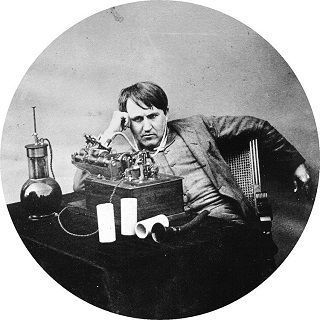More on Wind Energy vs. Coal-Fired Power Plants

One of the most useful seminars I ever attended was about rules for introducing a new technology that replaces currently accepted technology. The speaker focused his rules on Edison’s intro of electric lighting to replace gas lamps.
One rule was to use terminology that’s consistent with the current methods. That’s why he originally marketed “electric LAMPS” instead of bulbs. People liked lighting from gas lamps, so using a different energy form to create light wasn’t a stretch.
Another rule was to position the new technology to as part of the existing infrastructure in a way that was consistent with people’s comfort level. That’s why most early electric fixtures were wall-mounted, even though ceiling mounts would be more efficient. Existing gas lamp infrastructure used only wall mounting, because ceiling mounting would create fire hazards. Edison also ran his wiring through gas pipes—difficult, because of bends that required disassembly of pipe junctions–even though it would have been faster and cheaper to run wiring behind walls.
Another rule was to never discuss or disparage gas lighting. He never suggested the end of the gas lighting paradigm. He simply sold a technology that was faster to create, cheaper to buy and offered better results. After a few years, one day, there were no new homes with gas lamps. And in a few more years, most of the existing gas lamps had been retrofitted to the new technology. Gas lamps died, with no one having fired a shot.
It would have been a tougher road had he acted like Al Gore. He would have said, “You’re all going to burn in a massive fire if you don’t use my new technology. You must outlaw gas lamps immediately. Gas lamps will eventually spoil the air we breathe. They’re poisonous. Your grandchildren will die…etc.
Wind turbines are an interesting analogy. California installed hundreds of them along the Altamont Pass and they produced a significant portion of the state’s energy for several years. Consumers didn’t know much about them. Electricity still arrived at their homes in the same easy way. Then activists started screaming about coal plants. So the hydrocarbon lobby—rich and powerful—invented the counter attack about killing birds. To me it’s just like Washington…a perpetual pissing contest that actually retards advancement of clean technologies.
I respond:
You certainly have a point here. I had heard that about Edison—probably from you–and I tell that story often to clients who are introducing new technologies, like my people at OTECorp.
You need to realize, however, that the analogy runs so far. The gas that electricity replaced wasn’t killing tens of thousands of people annually via lung disease, causing hundreds of thousands of cases of asthma, costing $700 billion (in the U.S. alone) in increased healthcare dollars, causing desertification and sea-level rise, etc. I think it’s a reasonable (though not proven) assumption that masses of people can be brought to a position where they actually care about this stuff. At that point, our feckless “leaders” may do something; again, another unproven assumption.
I also dispute that the attack on wind came as a counter-attack from Big Coal; wind represents well over 4% of the U.S. mix, and its headed for 5% in one heck of a hurry. That’s a chunk, my friend. Wind is a real threat today, where it wasn’t 10 years ago. Threats always draw attacks in response–and especially when those attacks come from people who have no compunction about poisoning a planet and its people; that’s not exactly high moral character.

Craig,
The core difference between Edison’s bulb vs the renewable power industry is that in Edison’s case the bulb was fully disruptive, and in the case of renewables it is not.
Edison’s bulb could be flipped on or off with the flip of a switch, and would last dozens of hours without further meddling… It required no expensive fuel, so the overall operation of the lighting served to cost the consumer only a small fraction of the price of the lamps… and the bulbs were brighter and whiter without flickering. They offered the consumers something that was clearly better and cheaper.
For renewables, only wind has reached cost parity, and then only in 2008 in high-wind regions with subsidies (as of 2013 it had reached cost parity without subsidies in some high-wind regions if you assumed zero curtailment, but there’s always curtailment in the high wind regions now)… It was 2004-2005, while wind power was clearly marching towards cost parity in the most favorable regions, that the BS propaganda about birdstrikes started being repeated on FOXNOISE and such… At that point, wind comprised 0.3% of the total grid energy in the U.S., most of which was not in California…
When renewables were just getting started in the 80’s they were much more expensive, provided intermittent power – which means that from a consumer standpoint were less desirable… and otherwise provided an indistinguishable product. Nothing there had the hallmarks of a disruptive technology. Without clearly outlining the costs to society that fossil power gets subsidized through the expedience of pollution, there’s no way renewables could have ever been developed – as there seemed to be no chance they would ever be disruptive if the pollution of fossil energy was ignored.
Solar is still a ways off from parity, even with subsidies, in most places… Geothermal would have no hope of parity without subsidies, and wood and hydro resources are steeply limited in potential scope… We still need to focus on the pollution of fossil energy in order to come out cheaper for society on a balance sheet. If we’re not cheaper, we cannot compete – much less disrupt.